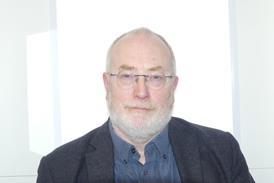It’s wrong to think we must choose between good enough quality at lower cost and ever-higher quality outcomes. Both are possible, argues Kevin Evans
Sponsored comment by GE Healthcare Finnamore
High value healthcare certainly has a place in the western world.
Porter’s value based healthcare approach exhorts us to measure and improve outcomes and costs with patient-level resolution in order to grow value. Outcomes include how people function physically, socially, mentally… such as being short of breath, or at ease with one’s body image, to pick a couple at random.
Can Porter’s approach create “high value”? It looks like continuous improvement, not a radical departure from the NHS paradigm, such as Vaatsalya.
But measuring and improving at patient level implies that you have a grip on what “value” means in your system. And, if you truly understand value, history shows that you can unearth surprising, swingeing opportunities to rebase your system.
If you don’t think that’s possible in your organisation, then show me your data. Every NHS organisation I have worked with has had terrific opportunities to increase value.
Most don’t have data that adequately quantifies key opportunities, such as:
- Service user journeys which don’t follow known optimal pathways
- Time lost to inefficient working practices
- Interventions which aren’t considered to offer best value to the payer
- Interventions which aren’t considered best value by the recipient
These imply we are wasting resources and providing sub-optimal quality. The last one is particularly interesting: how much time do we waste in servicing the wrong need?
Even as simplicity limits your offerings, it also focuses your resources on to a smaller number of challenges
In the long term, technology may help us to wipe out some diseases, and all the wastes that go with them. While we wait for such wonders, we might reflect on the benefit Vaatsalya derives from simplicity.
Because even as simplicity limits your offerings, it also focuses your resources on to a smaller number of challenges.
What if you funnelled every resource that wasn’t nailed down on to your biggest pathway, into really knowing what each service user needed, and servicing that need with relentless precision?
Dr Naik challenges us to think about the virtues of aspiring for good enough quality at lower cost, rather than ever-higher quality outcomes. I don’t believe it’s an either/or.
Low cost flows directly from good quality: we no longer need extra resources to handle variation, because we have become very good at doing the right thing, at the right time and place. I’ve seen a handful of NHS organisations really commit to dealing with variation.
Their reward was a dramatic increase in value.
In these lean times, we have a rare opportunity not only to have our cake and eat it, but also to feel good about it.
Kevin Evans is a partner at GE Healthcare Finnamore.
How India can help the NHS to see further

There is no reason why the NHS cannot plug some of its funding gaps using lessons from India
- 1
 Currently
reading
Currently
reading
How creating high value can lead to low cost
- 3

































No comments yet